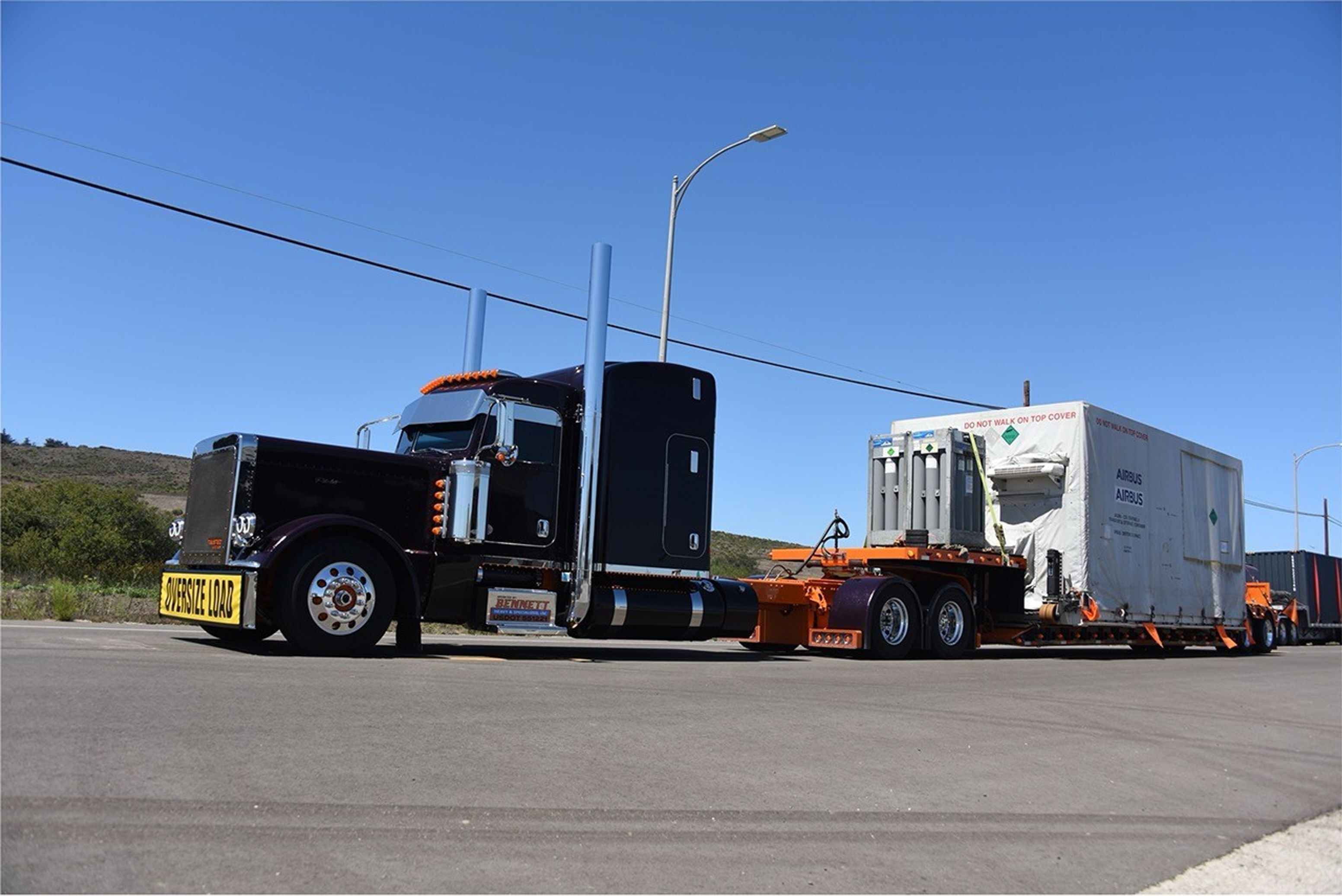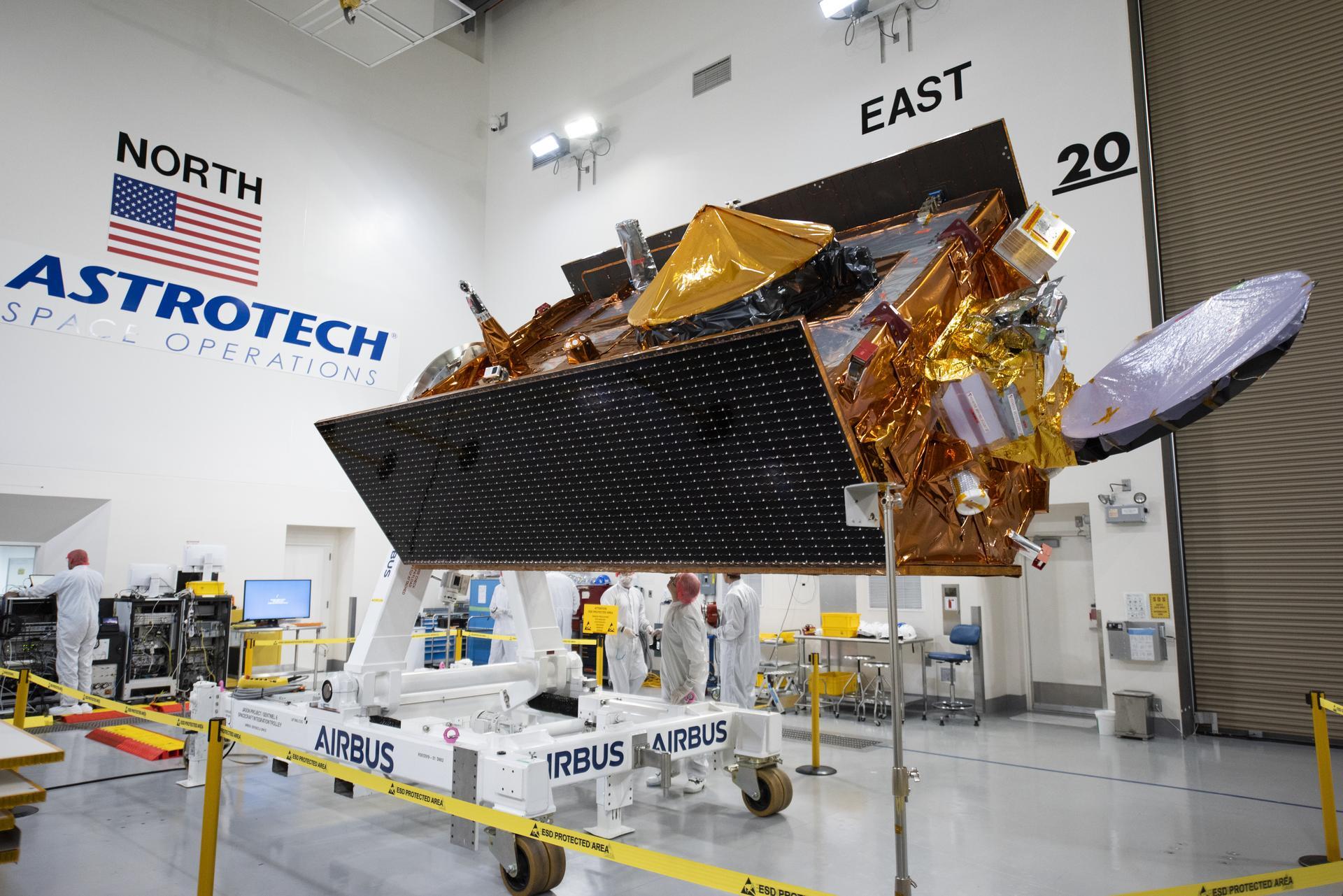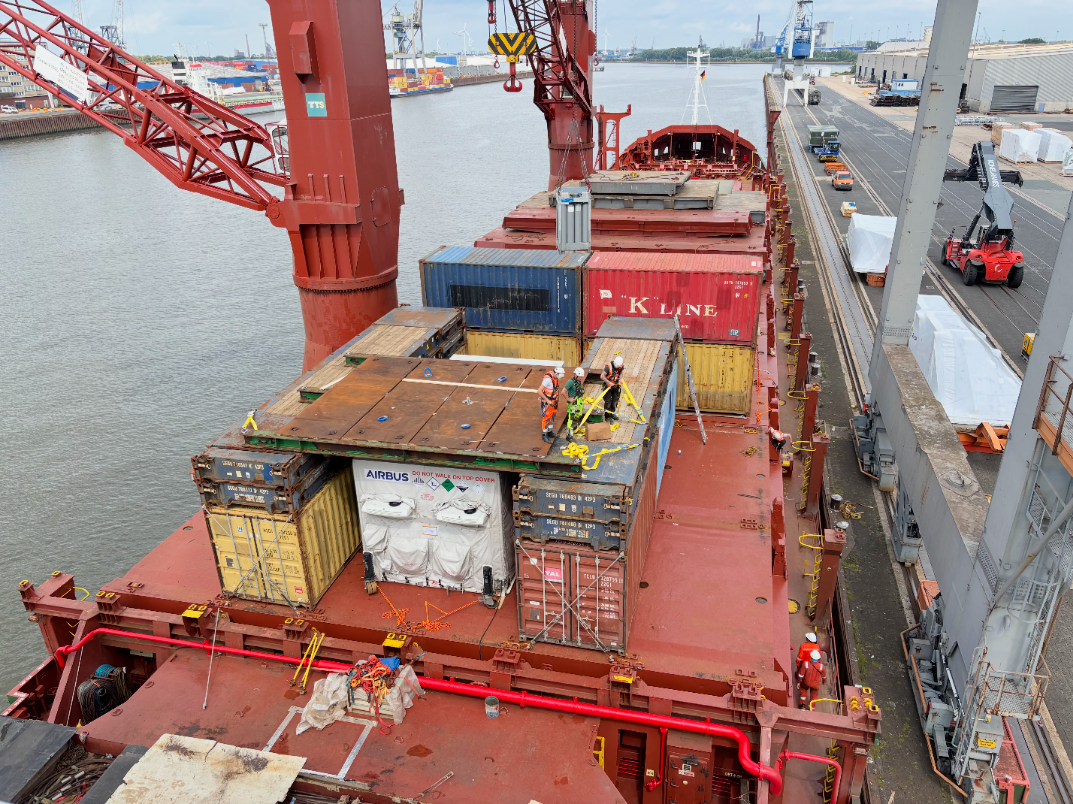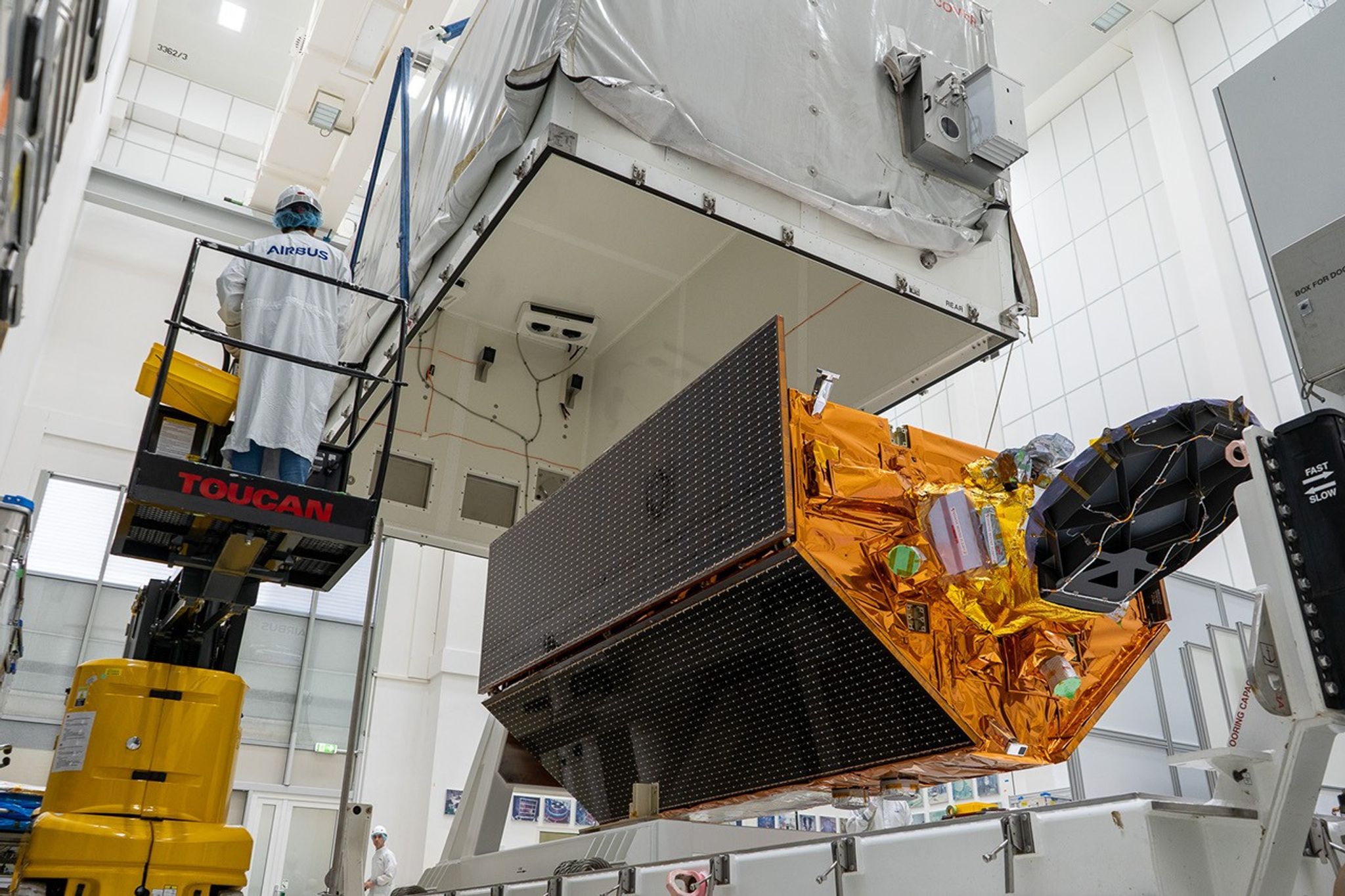22.08.2025
New NASA-ESA Sea Level Satellite Arrives at California Launch Site

he Sentinel-6B satellite will soon start final preparation to ready it for launch later this year.
After a trans-Atlantic journey on a cargo ship and a truck ride from Texas to California, the international sea level satellite Sentinel-6B arrived at a NASA facility at Vandenberg Space Force Base in California Aug.18. Teams from the main mission partners, NASA and ESA (European Space Agency), as well as ESA’s prime contractor Airbus, will begin final preparations for the spacecraft’s launch this fall.
Sentinel-6B’s sea surface height measurements will provide crucial information to help improve coastal planning and enable local and state governments to make informed decisions about protecting coastal infrastructure, real estate, and energy sites. Those measurements will also help improve weather predictions critical to commercial and recreational navigation. In addition, data from Sentinel-6B will help decision-makers to better safeguard coastal military installations and provide crucial information about weather and ocean conditions to the U.S. Department of Defense.
NASA is targeting launch no earlier than November on a SpaceX Falcon 9 rocket from Space Launch Complex 4 East at Vandenberg Space Force Base.
The satellite is the second of two spacecraft that constitute the Sentinel-6/Jason-CS (Continuity of Service) mission, a collaboration between NASA, the European Union, ESA, EUMETSAT (the European Organisation for the Exploitation of Meteorological Satellites), and NOAA (National Oceanic and Atmospheric Administration). The European Commission provided funding support, and the French space agency CNES (Centre National d’Études Spatiales) contributed technical support.
Sentinel-6B will take over from its twin, Sentinel-6 Michael Freilich, which launched from Vandenberg in November 2020. Both satellites are part of a long line of U.S.-European missions that have monitored global sea levels since 1992.
Sentinel-6B underwent final integration after the launch of Sentinel-6 Michael Freilich and then went into storage to await its 2025 launch. Crews took the Sentinel-6B satellite out of storage in late 2024 and ran it through tests and checks at a facility in Germany to ensure it was functioning properly. Teams then packed Sentinel-6B into a climate-controlled container for its journey to the United States, which began on July 22.
NASA’s Jet Propulsion Laboratory, managed for the agency by Caltech in Southern California, is contributing three science instruments for each Sentinel-6 satellite: the Advanced Microwave Radiometer, the Global Navigation Satellite System – Radio Occultation, and the Laser Retroreflector Array. The agency is also contributing launch services, ground systems supporting operation of the NASA science instruments, the science data processors for two of these instruments, and support for the international ocean surface topography community.
Quelle: NASA
----
Update: 2.10.2025
.
Sentinel-6B Satellite Moves into Payload Processing Phase

The Sentinel-6B spacecraft recently made a crucial transition in its prelaunch journey when technicians transferred the spacecraft from the NASA hangar to the Astrotech Space Operations payload processing facility at Vandenberg Space Force Base in California, on Sept. 24. After the move, technicians removed the satellite from its transport container and began processing activities.
At the Astrotech facility, Sentinel-6B will undergo detailed inspections and tests, including calibrations, functional tests, solar array checks, and fueling in a clean room designed to keep it free from contamination. This processing phase is essential to verify that every system meets the rigorous standards required for the mission — measuring global sea level, ocean state, and monitoring atmospheric temperatures with extraordinary precision. Sentinel-6B will extend the gold-standard sea level record into its fourth decade, building on the legacy of its twin, Sentinel-6 Michael Freilich and Jason-series satellite missions pioneered by NASA. Every milestone is a step closer to extending our view of Earth’s changing seas.
NASA is targeting launch no earlier than November on a SpaceX Falcon 9 rocket from Space Launch Complex 4 East at Vandenberg Space Force Base.
NASA, working in partnership with ESA (European Space Agency), EUMETSAT (European Organisation for the Exploitation of Meteorological Satellites), National Oceanic and Atmospheric Administration, and CNES (Centre National d’Etudes Spatiales), is working to ensure that Sentinel-6B achieves its mission to provide vital data for Earth science, storm forecasting, coastal planning, and more to benefit people around the globe.
Quelle: NASA


